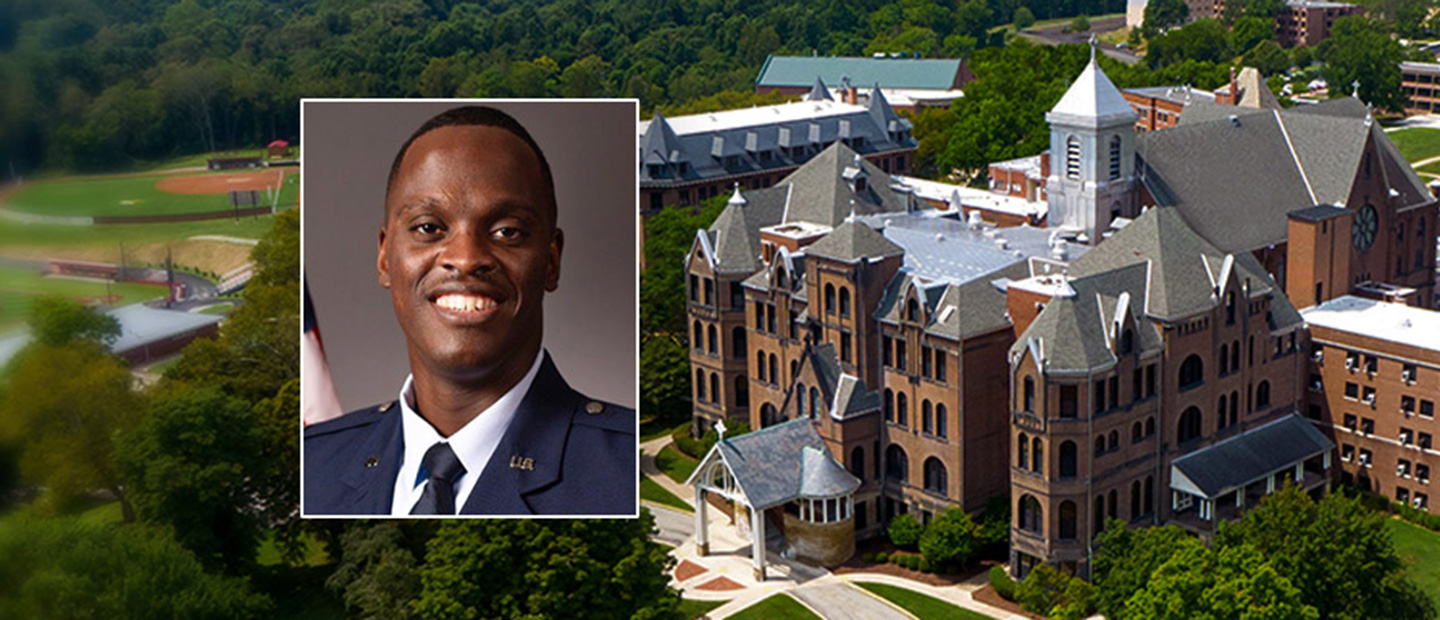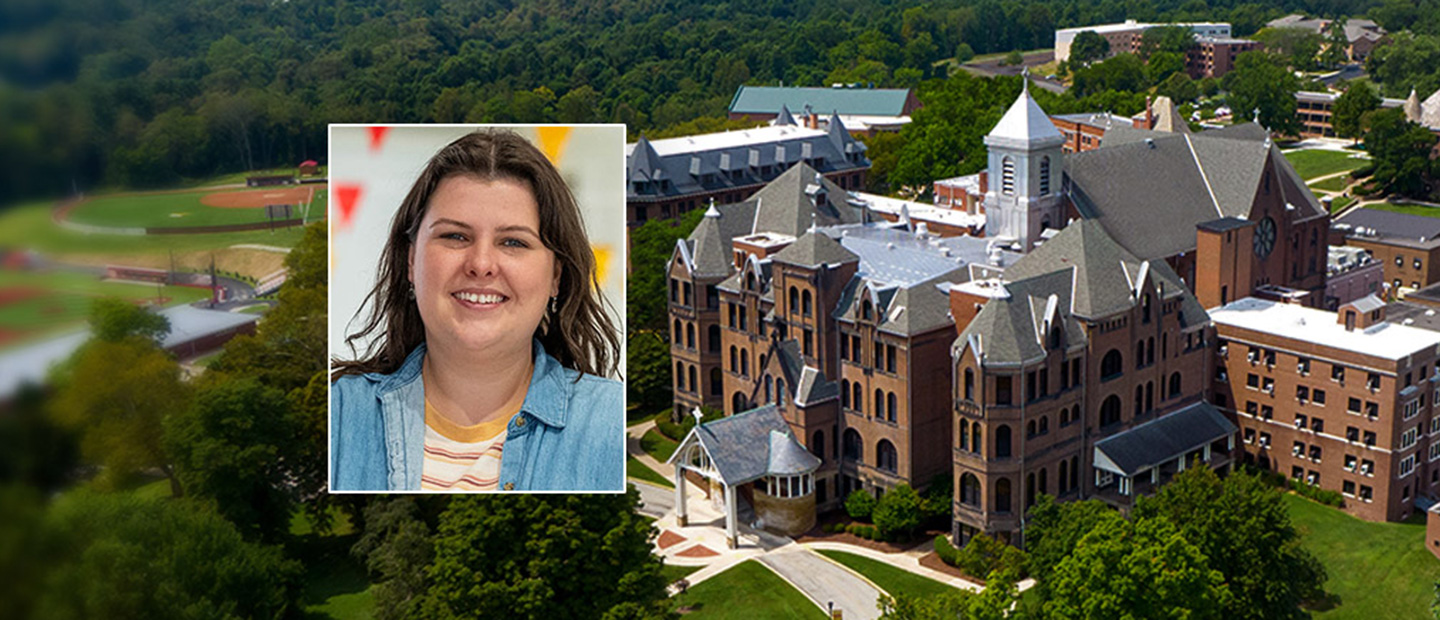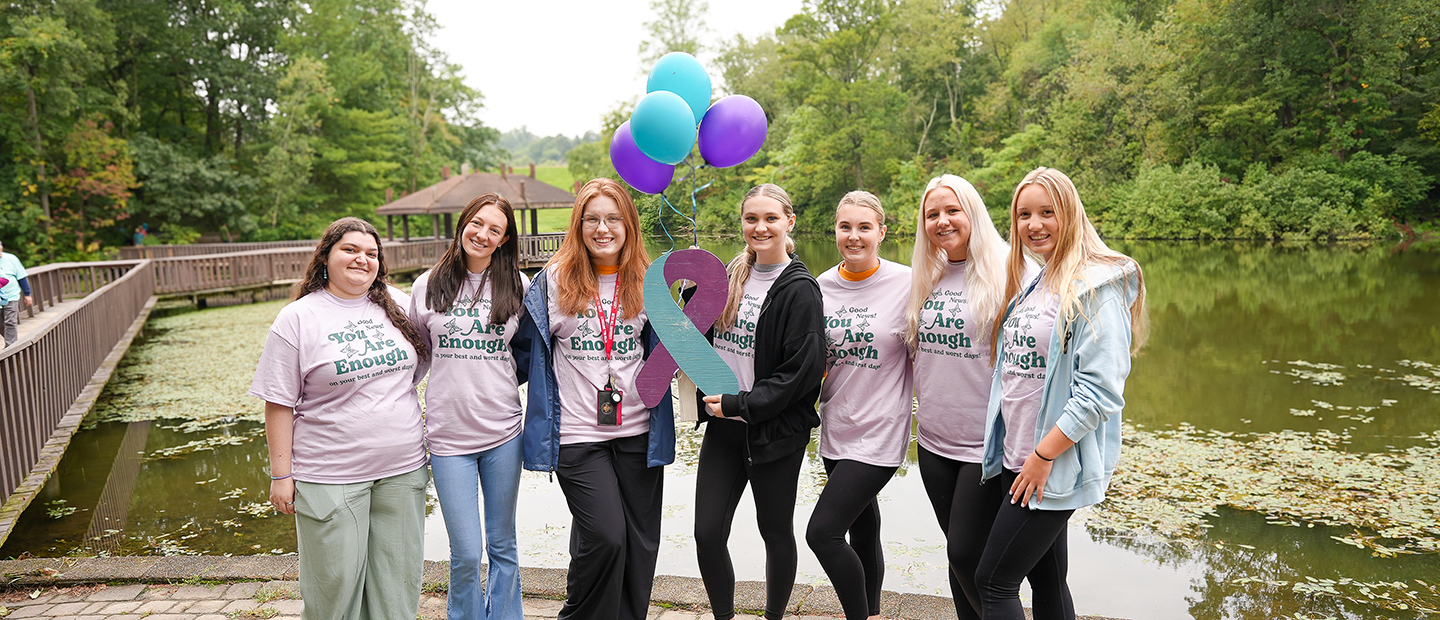Keeping Things Green: Sustainability Efforts at Seton Hill
By Marisa Valotta ’18, Seton Hill Creative Writing Major & Marketing Communication Intern
When it comes to sustainability, senior biochemistry major Margaret Gerthoffer stands firm in her belief in the power of working together to improve the environment.“We need scientists, businessmen/women, artists, musicians and just everyone possible to really come together as a community to instate change,” she says. For her Senior Honors Capstone Project, Margaret is forming a recycling committee called Seton Hill Advocates for Recycling Committee—SHARC for short. The committee will be composed of faculty, staff and students, and the goal is to combine both the sciences and the arts to bring about change on campus. Luckily, she is not alone in her efforts, as Seton Hill has a history of supporting sustainability initiatives.
Seton Hill Gardens Help Feed Campus, the Sisters of Charity & the Surrounding Community
Perhaps the most well-known of Seton Hill’s sustainability projects are its campus gardens, which are managed by the food service director, Darren Achtzehn. In operation since 2009, the original campus garden has grown from 25’ x 50’ to 90’ x 325’. It is run entirely through volunteers and funded by Seton Hill students, staff and members of the community. The resulting crops are used in the university’s dining hall. To date, the garden has produced tomatoes, peppers, cabbage, radishes, beets, beans, cucumbers, zucchini, yellow squash and kale. In addition, a small herb garden and composting area is located near the main dining hall.
“Nature is a community of life where each insect, flower, plant, tree and rock lives together in balance.”
In 2015, Darren partnered with Sister of Charity Barbara Ann Smelko to start another garden, this one located on the Sisters’ property next to campus. (He had wanted to expand the campus garden, but was unable to do so because it would interfere with land used for cross country competitions.) Harvests from the new Charity garden are split between Seton Hill, the Sisters of Charity and the Westmoreland Community Food Bank. The first harvest in September 2016 yielded 1,900 pounds of potatoes and in September 2017, 600 pounds of onions. The campus and Charity gardens not only save the Seton Hill dining hall thousands of dollars each semester while also providing food for those in need, they also benefit the environment. Using locally grown food reduces the greenhouse gas emissions from vehicles used to transport food long distances.
Bats, Butterflies & Bees
Alongside the Charity garden, a bat house was installed to offer a place for bats to give birth. According to Sister Barbara Ann, “the presence of bats in the garden area is of great benefit for pollination of the garden, for the consumption of mosquitos and other unwanted insects, and for the support of the natural community of animal and vegetation life in the area.” During the summer of 2017, students helped plant a small butterfly garden near the Charity garden to support the population of butterflies in the area, especially monarch butterflies. Milkweed, which monarchs cannot survive without, was placed in the center of the garden. Other flowers native to western Pennsylvania were planted alongside the milkweed. Large stones placed throughout the garden serve both as a pathway and as a resting place for the butterflies; two bird baths collect water for them. In March 2018, students in the Biology Club planted seeds in the greenhouse in preparation for the the 2018 garden, which is scheduled to be planted in May. Sister Barbara Ann is planning to install several beehives as well.
“Nature is a community of life where each insect, flower, plant, tree and rock lives together in balance,” says Sister Barbara Ann. “With the vegetable, wildflower, butterfly gardens and bat house, we hope to add the Sisters of Charity’s presence to nature’s community and pass on that learning to the local SHU and Greensburg community.”
Green Thread
In addition to using locally-grown food, Seton Hill’s dining hall is committed to sustainability in other ways as well. Seton Hill partners with Aramark, the university’s dining service, to take advantage of an environmental sustainability platform called Green Thread that helps to reduce the impact dining operations have on the environment. At Seton Hill, all dining locations on campus recycle, and use 100% recycled office and copy paper as well. In 2010, Seton Hill implemented trayless dining, which helps cut back on food waste, conserves water and decreases the amount of cleaning chemicals entering the waste stream. In fact, all dining locations on campus use “green” cleaning products—products that contain environmentally friendly ingredients—rather than chemical-based products than can be harmful to humans and the environment.
Learning About the Environment & Sustainability
One of Seton Hill’s newest majors, Global Studies, offers a specialization in environment and sustainability. In the words of Jessica Brzyski, Ph.D., assistant professor of biology at Seton Hill, this specialization “is designed to be interdisciplinary and its main goal is to examine the relationship between humans and the environment to develop our students as stewards of the Earth, directly supporting the mission of Seton Hill University. Humans are integral to the future condition of this planet and we are at a time when everybody needs to examine their role and their impact on the environment.”
"The career opportunities are numerous in the environmental field."
“Wherever you work, environmental issues are becoming something that employers really want their people to know about,” says Roni Kay O’Dell, Ph.D., assistant professor of political science and one of the designers of the Global Studies Program. “The career opportunities are numerous in the environmental field, and those are in government, public policy, analysis and nonprofit organizations.” Through the program, Dr. O’Dell forsees the creation of projects that will increase environmental awareness and directly address environmental issues and needs within the Seton Hill community.
Suzanne Rogers, Ph.D., associate professor of biology, had students in her Plant Biology and Ecology course create public service announcement videos exploring different views on hydraulic fracturing, or fracking. The fracking process, which extracts natural gases, has sparked debate over its effect on the environment. Since Seton Hill sits in the middle of the Marcellus Shale gas field, this issue hits close to home. Students completed research and made videos based on the views of gas mineral rights owners, surface land owners, the Marcellus Shale industry, the PA Department of Environmental Protection, the mayor of a small town, and a new college graduate looking for a job.
The Nature Club, SHARC & Individual Initiatives
Even outside of official programs or courses, students on campus have already taken initiative to live more sustainably. Resident Barbara Sutherin, a sophomore premed major and Spanish minor, began working towards a zero-waste lifestyle in July 2017, which means she is attempting to produce as little landfill trash as possible. She takes a refillable coffee cup everywhere, has her own reusable to-go container that she brings to the dining hall, and started composting in her residence hall’s community kitchen, taking the compost to the larger compost barrels outside of the dining hall. Barbara talks to her friends about what they can do to “make little changes with big impact.”
Seton Hill’s Nature Club is working to make a positive impact on the environment by encouraging people in the dining halls not to use styrofoam, but to use reusable coffee cups instead. They have posted “bring your own cup” (BYOC) signs around the dining hall in hopes it will help reduce styrofoam use. They have hosted campus-clean ups and worked on the campus gardens. In March 2018, they hosted an ice cream social in which they made ice cream out of frozen fruit to show that eating vegan, which is a sustainable food choice, can be just as delicious while reducing the impact dairy farming has on the environment.
Margaret Gerthoffer launched a few individual initiatives before forming SHARC; she supported the Chemistry Club’s Adopt a Highway initiative (a long-standing tradition at Seton Hill) and hosted a floor program in which residents repurposed grocery bags into sleeping mats for the homeless. With SHARC, she has replaced the dining hall’s styrofoam soup bowls with paper containers, and started a reusable container initiative that allows students to buy a to-go box that they can use, give to the dining hall to be washed, then pick up when needed again.
Environmental Research at Seton Hill
In 2018, Seton Hill’s Biology Department received a National Science Foundation Grant to research plant diversity and adaptability. Dr. Brzyski, who is heading the project, notes how important it is for species to be able to adapt to environmental changes, or else they risk becoming extinct. “My research involves studying a variety of plants, both rare and common, to examine their potential to adapt or acclimate. Part of living sustainably is to preserve biodiversity, which both directly and indirectly benefits humans,” Dr. Brzyski says. The first step to protecting biodiversity, which is the variety of life on Earth, is to understand the challenges it faces in our constantly changing environment. Read more about Dr. Brzyski’s research here.
Why Does Sustainability Matter?
Margaret Gerthoffer connects her SHARC project to Seton Hill’s tradition of Catholic Social Teaching, which she says “has evolved to stress a given responsibility to care for our environment. As stewards of God’s creations, we take upon the task of ensuring a clean, fruitful environment to pass on to future generations.”
Photo above: Representatives of the Junior Class (from left to right) Arun Thalody (Osteopathic Medicine), Megan Carnahan (Exercise Science), Julia Natalia (English) and Sebastian Murabito (History) at the 2018 Tree Planting Ceremony. Every year since 1920 Seton Hill’s Junior Class has planted a tree on campus.



